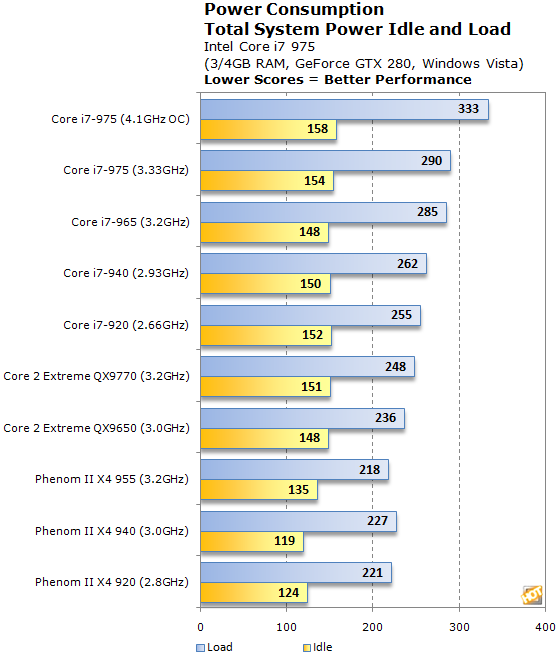Intel Core i7 975 Extreme Edition Processor Review
Throughout all of our benchmarking and testing, we monitored how much power our Core i7 975 Extreme Edition test system consumed using a power meter. Our goal was to track how much power each configuration used while idling and while under a heavy host processor workload. Please keep in mind that we were testing total system power consumption at the outlet here, not just the power being drawn by the processors alone. Regardless, if you look at the differentials between similarly configured test platforms, you can easily isolate the power consumption profile of each of the processors we tested.
|
|
|

In terms of idle power consumption, the new Core i7 processors are right in line with their Yorkfield-based Core 2 predecessors. Only a few watts separate these architecturally very different platforms. Under load, however, the Core i7-based systems consumed markedly more power. The 3.33GHz Core i7 Extreme 975, for example, consumed 42 more watts than a Core 2 Extreme QX9770 while under a heavy workload. Keep in mind though, the Core i7 offers a fair degree of upside performance at like frequencies versus Intel's legacy Core 2 architecture.
So, while peak power consumption may be somewhat higher, the Core i7 platform is just as, if not more power efficient, in terms of performance-per-watt results, versus the Core 2 platform. With that in mind, Intel's new 3.33GHz speed bump only consumes 5 watts more, fully loaded versus the Core i7 965. At 4.1GHz overclocked with the Core i7 975, we're subjected to an increased power draw of up to 43 more watts under full load. However, with a 23% clock speed boost, 15% more power consumption doesn't sound all that unreasonable.






